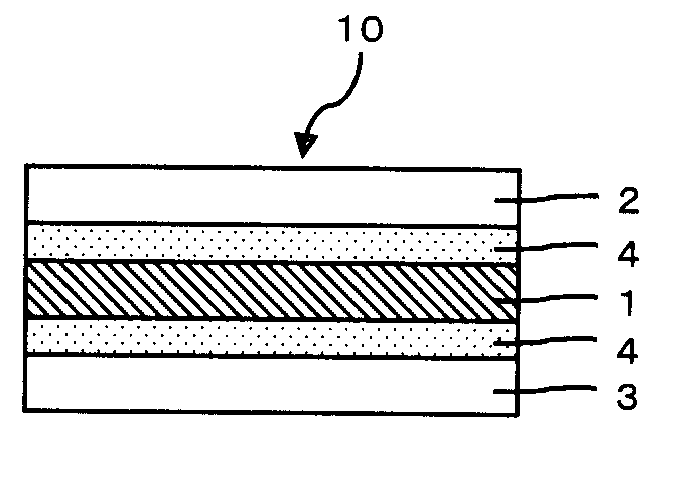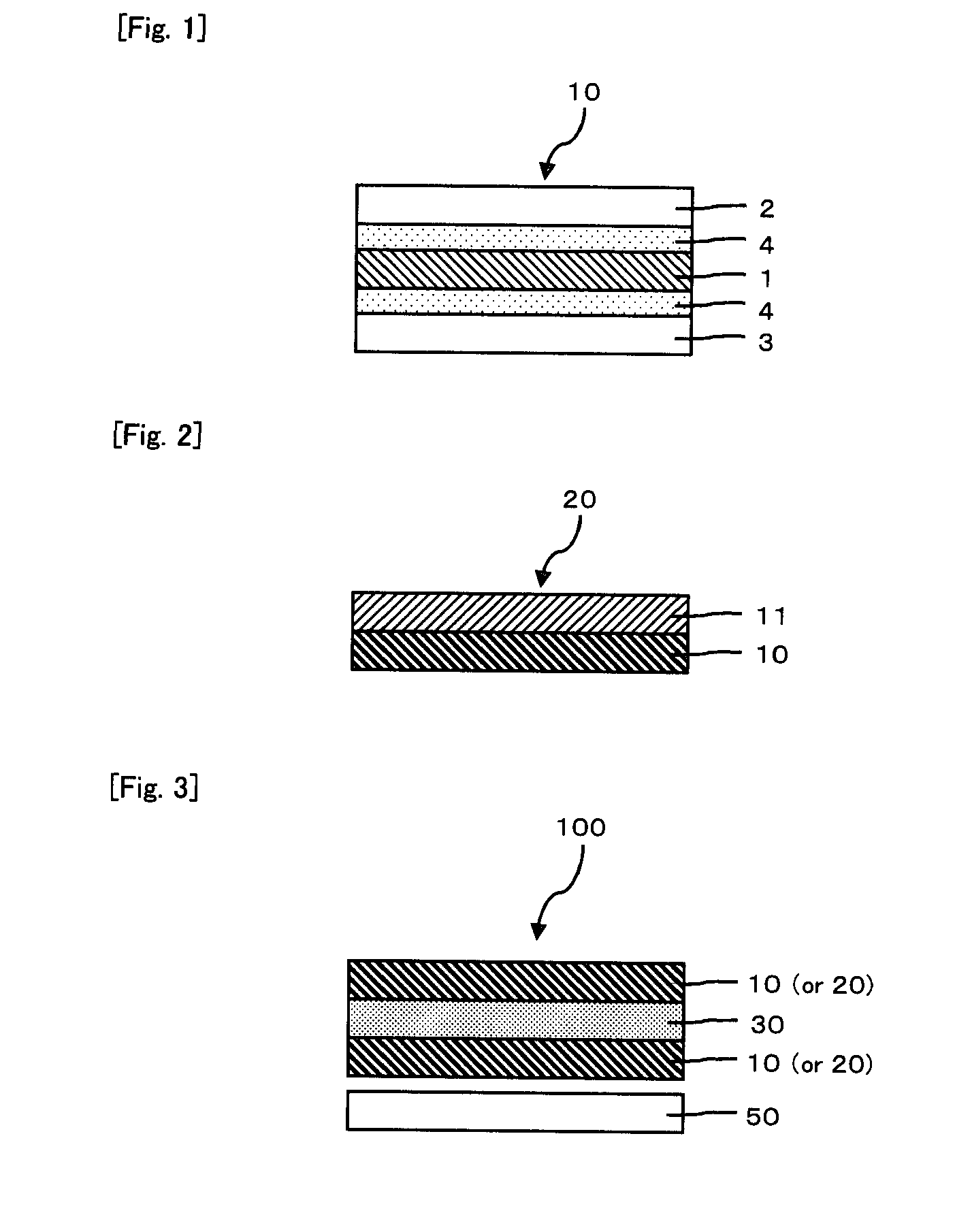Polarizing plate, method for production thereof, optical film, and image display device
a technology of polarizing plates and optical film, which is applied in the direction of polarizing elements, instruments, applications, etc., can solve the problems of not improving the humidity resistance of polarizing plates, deformation of optical properties, and inability to improve durability, so as to achieve excellent durability and less likely to cause knicks
- Summary
- Abstract
- Description
- Claims
- Application Information
AI Technical Summary
Benefits of technology
Problems solved by technology
Method used
Image
Examples
example 1
Preparation of Polarizer
[0129]A 75 μm-thick polyvinyl alcohol film with an average degree of polymerization of 2,700 was stretched and fed, while it was dyed between rolls having different peripheral speed ratios. First, the polyvinyl alcohol film was stretched in the feeding direction to 1.2 times, while it was immersed in a water bath at 30° C. for 1 minute and allowed to swell. Thereafter, the film was stretched in the feeding direction to 3 times the original unstretched state, while it was immersed and dyed in an aqueous solution (bath) of 0.03% by weight of potassium iodide and 0.3% by weight of iodine at 30° C. for 1 minute. The film was then stretched in the feeding direction to 6 times the original unstretched state, while it was immersed in an aqueous solution (bath) of 4% by weight of boric acid, 5% by weight of potassium iodide and 2.5% by weight of zinc sulfate at 60° C. for 30 seconds. The stretched film was then dried at 70° C. for 2 minutes to give a polarizer. The r...
example 2
Protective Film
[0133]Ninety parts by weight of a poly(methyl methacrylate) resin with a photoelastic coefficient of 5×10−12 (m2 / N) (ACRYPET VH, manufactured by Mitsubishi Rayon Co., Ltd.) and 10 parts by weight of an acrylonitrile-styrene copolymer (STYLAC AS, manufactured by Asahi Kasei Corporation) acting to cancel the birefringence of the resin were dissolved and extruded through a T-die and formed into a film on a casting roll. The film was then stretched to 1.8 times in machine direction by a zone drawing method so that a poly(methyl methacrylate) film having uniaxial molecular orientation was obtained. The uniaxially oriented film was then stretched to 2.2 times in transverse direction by a tenter stretching method so that a 40 μm-thick film was obtained that was mainly composed of the poly(methyl methacrylate) and had biaxial molecular orientation. The resulting film had a water-vapor permeability of 90 g / m2 per 24 hours.
Preparation of Polarizing Plate
[0134]A polarizing plate...
example 3
Preparation of Adhesive
[0135]An adhesive was prepared in the same manner as in EXAMPLE 1, except that the amount of the addition of the aqueous solution of colloidal alumina (15 nm in average particle size, 10% by weight in solids content, positively charged) was controlled such that 140 parts by weight of the colloidal alumina was mixed with 100 parts by weight of the polyvinyl alcohol resin.
Preparation of Polarizing Plate
[0136]A polarizing plate was prepared in the same manner as in EXAMPLE 1, except that the adhesive described above was used instead.
PUM
| Property | Measurement | Unit |
|---|---|---|
| RH | aaaaa | aaaaa |
| particle size | aaaaa | aaaaa |
| thickness | aaaaa | aaaaa |
Abstract
Description
Claims
Application Information
 Login to View More
Login to View More - R&D
- Intellectual Property
- Life Sciences
- Materials
- Tech Scout
- Unparalleled Data Quality
- Higher Quality Content
- 60% Fewer Hallucinations
Browse by: Latest US Patents, China's latest patents, Technical Efficacy Thesaurus, Application Domain, Technology Topic, Popular Technical Reports.
© 2025 PatSnap. All rights reserved.Legal|Privacy policy|Modern Slavery Act Transparency Statement|Sitemap|About US| Contact US: help@patsnap.com


